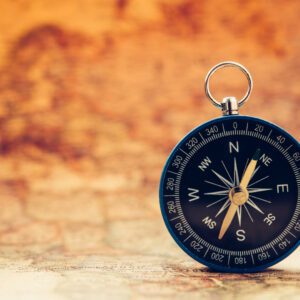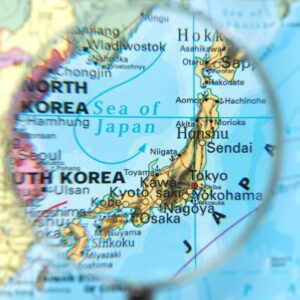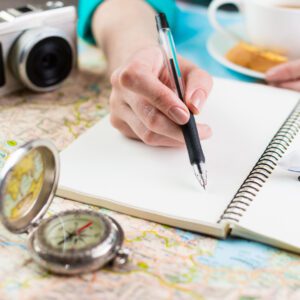How to create a Japanese itinerary that won’t fail No.3
Table of contents
1.How should “elimination of uncertainty” be realized?
2.We collected about 10,000 pieces of information about tourist destinations in Japan
4.The small number of public transportation services contributes to narrowing down the destinations
1.How should “elimination of uncertainty” be realized?
After narrowing down the travel destinations by “seafood season”, how should “elimination of uncertainty” be realized?
In fact, uncertainty has already been greatly reduced at the stage of narrowing down the travel destination options. At least, we’ve decided where to go and what to eat. In particular, because we are narrowing down by “seafood season”, it is almost certain that we will achieve the greatest purpose of the trip, “eating delicious food”.

However, uncertainty has not been completely resolved when traveling. This is because the uncertainty in terms of travel execution, such as which tourist spot to go to and which transportation to use, has not been resolved.
Now, we will explain how to resolve our own uncertainty in terms of which tourist spot to go to. In the first place, the uncertainty in creating an itinerary is “caused by inaccurate or inadequate information.” To eliminate this uncertainty, we must continue to search for and collect information.

2.We collected about 10,000 pieces of information about tourist destinations in Japan
There, we collected about 10,000 pieces of information about tourist destinations in Japan. Specifically, 25 world heritage sites, 228 national treasures (buildings), 5,403 important cultural properties (buildings), historic site scenic natural monuments (36 special scenic spots, 387 scenic spots), historic site scenic natural monuments ( 63 special historic sites, 1,795 historic sites), 69 important cultural landscapes, 320 important intangible folk cultural properties, 106 important intangible cultural properties, 126 important traditional buildings preservation area, 100 views of Japan, new 100 selections of Japanese tourist spots, 100 famous castles, 12 existing castle towers, 5 wooden restoration castle towers, 3 Japan’s three major mountain castles, 3 Japan’s three major water castles, 100 famous mountains, 100 selections of cycling roads, The top 1,000 travel word-of-mouth sites total 10,081.

At the stage when we collected more than 10,000 tourist spot information, we could feel that “we have already collected enough information, so we don’t need any more.” This feeling of “enough” is very important for “eliminating uncertainty”. Now that we’ve looked so far, the results we choose from them shouldn’t be that wrong. At the very least, it’s important for us to think so.

3.This is enough
Barry Schwartz, a psychologist I introduced earlier, also says that “this is enough” is usually “satisfactory”. However, Barry Schwartz argues that more choices make people unhappy.
Some may think that the amount of travel information we have collected over 10,000 in Japan is too much. But we don’t think so. This is because the tourist destinations that can be visited can be greatly narrowed down by the “address” of the tourist destinations that have been created in the database. For example, you don’t need to look up information about Shiretoko or Wakkanai, which is far away, even though you have decided to go to Sapporo, Hokkaido. By knowing all over 10,000 pieces of information by address, we can significantly narrow down our options. First of all, it is effective to narrow down the travel destinations by “seafood season”.

4.The small number of public transportation services contributes to narrowing down the destinations
In addition, when sightseeing in rural areas, the small number of public transportation services contributes to narrowing down the destinations. With only a few buses and trains a day, that’s a stumbling block and we can’t visit many tourist destinations. However, it is the small number of trains that greatly narrows down travel options and realizes “elimination of uncertainty”. To that end, it is essential to know the addresses of tourist destinations and create a database.

As mentioned above, if we make an itinerary, the travel plan will be decided without any trouble. Of course, it takes time to create an itinerary, but we don’t have to worry too much about making choices.
“The most effective way to reduce stress is to plan,” says psychologist Robert Epstein. Planning reduces uncertainty, increases “control” and reduces stress.
When we create an itinerary, we also understand priorities (meals, etc.) and obstacles to travel methods and travel times (small number of local public transports, distances between tourist destinations from addresses, etc.). This will allow you to make a satisfying plan. We need to be grateful that the obstacles caused by less transportation and longer travel times are not negative, but positive to narrow down the options.
Of course, for backpackers and other trips that last for months, we won’t need to plan. The main purpose of travel is to enjoy the uncertainty of “randomness”. I also enjoyed these trips when I was a university student.
But if we only have a week off, it’s essential to plan a trip. Again, the first thing we want to do is think about the top priorities we want to travel (we suggest the season for seafood) when deciding where to go. After that, it will be considerably easier to create an itinerary by narrowing down the options for sightseeing spots while considering the transportation and travel distance by address.

The problem is that for foreigners, it is not easy to collect information on tourist spot addresses and transportation in foreign languages. If you are having trouble collecting information, please feel free to contact us. It may be useful.
So far, we have introduced how to create our itinerary. We would be glad if you could find it helpful.